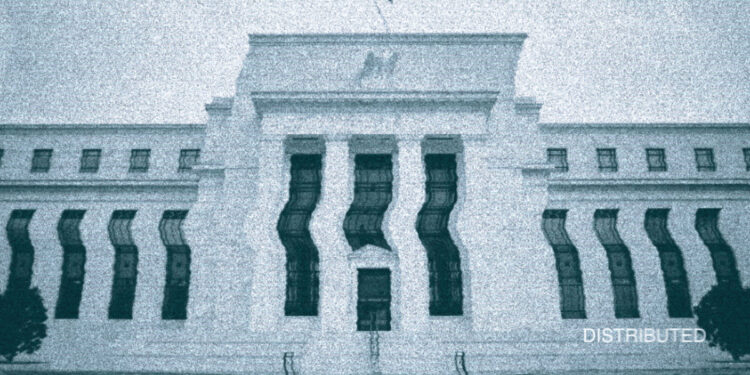As widely expected, the U.S. Central Bank left its interest rate unchanged this Wednesday after a two-day meeting but warned that inflation is still elevated.
The U.S. Central Bank signalled that interest rates would likely rise by another half of a percentage point by the end of this year, bringing the benchmark overnight interest rate rising from the 5.00%-5.25% range to a 5.50%-5.75% range. The U.S. Central Bank reported:
“In determining the extent of additional policy firming that may be appropriate to return inflation to 2% over time, the committee will take into account the cumulative tightening of monetary policy, the lags with which monetary policy affects economic activity and inflation, and economic and financial developments.”

According to the central bank’s Federal Open Market Committee, the U.S. banking system is sound and resilient; job gains have been strong, while the unemployment rate has remained low. Despite this, tighter credit conditions for households and businesses will likely weigh on economic activity and hiring in the second half of 2023.
Positive information is that the U.S. Labor Department’s consumer price index (CPI) reading showed this week that inflation rose only 0.1% in May compared with a 0.4% jump in April, confirming that the Fed’s restrictive policy rate is working. On Wednesday, the U.S. Bureau of Labor Statistics also reported that annual producer prices cooled more than projected in May, which supported the Fed to pause rate hikes at Wednesday’s meeting.
Easing inflation, signs of economic resilience, and a better-than-expected earnings season lifted U.S. stocks, and it is important to say that the benchmark S&P 500 and Nasdaq advanced this week to 14-month highs. Fed officials said they now expect a 1% gain in 2023 real gross domestic product, up from 0.4% projected in March. However, Fed officials lowered their 2024 growth projection to 1.1% from 1.2% and the 2025 outlook to 1.8% from 1.9%.
The next Fed meeting is scheduled for July 25-26, but it is still unclear how long rates could stay at the 5% plus level. For the next 12 months, or even 24 months, the reality is that Fed Chair Jerome Powell said that nearly all Fed officials expect more rate rises this year. Because of this, many analysts expect a significant economic contraction which will impact corporate earnings and financial markets. Wells Fargo analysts said that over the next 3-5 months, they expect a 10% correction on the U.S. stock market. If this happens, it will certainly negatively influence the cryptocurrency market.



